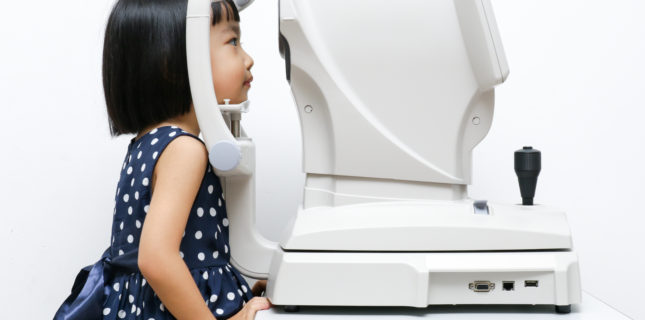
Back to School
With a new school year just around the corner, it’s a good time for a quick look at some of the latest guidelines for children as well as some fresh stats on early vision problems.
Tip: If you can catch certain eye conditions and diseases early, you can really change children’s lives.
THE FACTS
Here are some of the most common eye health issues among children in the U.S., as reported by Prevent Blindness:
- 3% of children under 18 are blind or visually impaired.
- 2% of kids under age five have amblyopia. Early detection is critical because treatment started after age seven is less effective.
- 2-4% of kids under age six have strabismus.
- 4% of children under five and 9% of kids ages 5-17 are myopes.
- 21% of children under five and 13% between 5-17 are hyperopes.
- 15-28% of children under age 17 are astigmats.
THE CHALLENGE
While those of us in the industry understand the importance of early eye exams, not everyone else does. Here’s the rub. As reported by the AOA (American Optometric Association), “An estimated one in five preschool children and one in four school-age children in the U.S. has a vision problem.”
- EXAMS. However, the Centers for Disease Control and Prevention reports that under 15% of preschoolers have had an eye exam.
- SCREENINGS. Even vision screenings are mandated by only 40 states, with just 15 of them requiring them for preschoolers. To make matters worse, there remains no national protocol for those screenings or for follow-up. And, in one study reported by the National Center for Biotechnology Information, only 38.7% of children who failed their vision screenings received any follow-up care.
AOA RECOMMENDATIONS
Here’s what the AOA suggests re. frequency of exams, and why they are so important.
- FREQUENCY. When it comes to early eye exams, the AOA recommends an initial comprehensive eye exam at age six months, again at age three, and then prior to first grade. What about grade school and beyond? The AOA suggests annual exams for youngsters who wear glasses or contacts and biennial exams for emmetropes.
- RAMIFICATIONS. Unfortunately, most parents don’t understand the potential ramifications of uncorrected vision. As Diane Adamczyk, O.D., chair of the AOA’s Evidence-Based Optometry (EBO) Committee, explains it: “If you can catch certain eye conditions and diseases early…, you can really change children’s lives. If a child isn’t functioning well visually, it can impact his or her performance in school. It can impact his or her behavior, future goals, and the kind of work he or she will do as an adult.”
That is definitely a message worth sharing!
SOURCES: Prevent Blindness, National Center for Children’s Vision and Eye Health (NCCVEH), The Children’s Vision and Eye Health Report, The American Optometric Association, and The AOA’s Evidence-Based Clinical Practice Guideline: Comprehensive Pediatric Eye and Vision Examination.
What messaging do you use to encourage parents to bring their young children in for eye exams? Please tell us and share in the Facebook conversation here.
Comments are closed.







